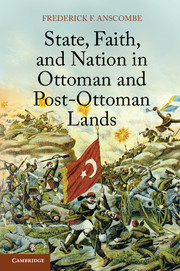Book contents
Part II - From Ottoman to Post-Ottoman States
Published online by Cambridge University Press: 05 June 2014
Summary
Truly the Ottoman empire must have been the Sick Man of Europe, because no healthy entity could have spawned such a sickly brood as the post-Ottoman states proved to be – and in most cases still are. Almost all young post-Ottoman states were weak, in that they struggled to win the active allegiance of more than narrow sections of their populations, facing from the majority of their citizenries either indifference or, worse yet, alienation. This flaw was apparent from the birth of practically every post-Ottoman country, because almost none was created by its people’s struggle to achieve independence, rather than by the decisions of European rulers. The population of each country created by external powers lacked a clear sense of what the new regime’s purpose was to be, trust in its capacity to improve public life and private well-being, and coherent leadership that could mold a vision and inspire such trust. The country that may be said to have broken the pattern was Turkey, which did have a leader with prestige, Mustafa Kemal (Atatürk), who lived long enough to shape a nation-state out of the remains of the Ottoman empire. Yet even in the case of Turkey, where Atatürk remains the most important political figure some three-quarters of a century after his death, elements of his vision of what it means to be a Turk were sufficiently alienating for parts of the population to create political instability over that three-quarter-century period.
- Type
- Chapter
- Information
- State, Faith, and Nation in Ottoman and Post-Ottoman Lands , pp. 141 - 148Publisher: Cambridge University PressPrint publication year: 2014



